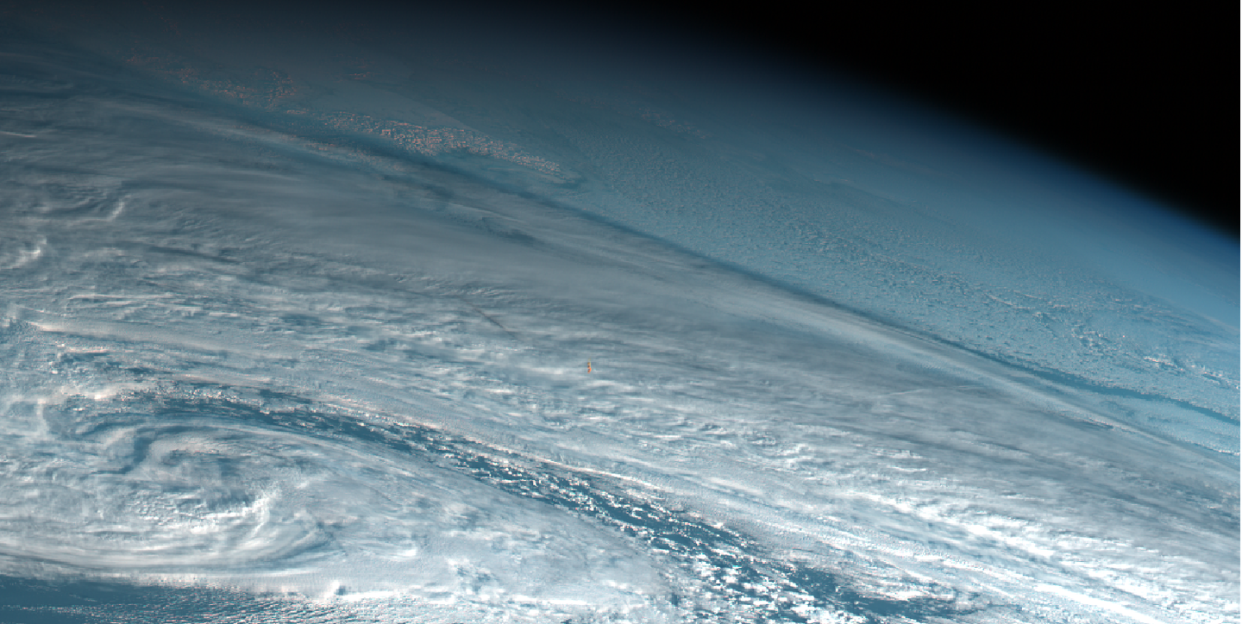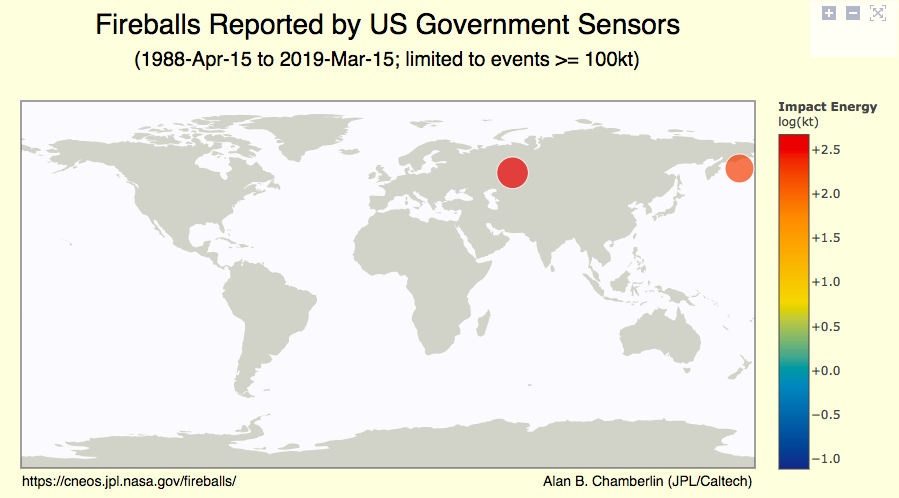A Meteor Hit Earth With the Force of a Nuclear Bomb and We Hardly Even Noticed

Last December, the Earth had a very special visitor. According to NASA, a tremendous fireball exploded in the atmosphere, the second-largest in 30 years and the largest since the Chelyabinsk incident of 2013.
The space rock exploded almost 16 miles (25.6 km) above the Earth's surface with an impact energy of 173 kilotons-10 times the energy released by the nuclear bomb dropped over Hiroshima. That's around 40 percent of the power of Chelyabinsk.
Some colour views of the #meteor that flew over the North Pacific in December 2018, taken by Japan's #Himawari satellite.
The meteor is really clear here - bright orange fireball against the blue + white background!
Background: https://t.co/r403SQxicZ pic.twitter.com/ctNN8zxsXb- Simon Proud (@simon_sat) March 18, 2019
The Chelyabinsk meteor gained notoriety in part due to its visibility. Flying over population centers in rural western Russia, it created a trail that was captured by cell phones and dashboard cameras. This new fireball exploded in relative solitude, burning up above the Bering Sea. It's difficult to see in the photo above, but it's the small orange dot in the middle, surrounded by the blues and whites of Earth.
If western Russia is rural, than the eastern Russia near where the fireball exploded is downright deserted. Known as the Kamchatka Peninsula, it is sparsely populated and filled with natural wonders like the Kronotsky Nature Reserve, known to some as Russia's Ring of Fire. It's not surprising that the explosion didn't make headlines.

Earth's water functions as "another thing we have in our defense," according to Kelly Fast, Near-Earth Object Observations program manager in NASA's Planetary Defense Coordination Office, speaking at the 50th Lunar and Planetary Science Conference. With so much of the planet filled with water, even if a meteor gets through the atmosphere there's still a large chance that its impact will be entirely absorbed by the sea.
NASA didn't detect the explosion at all when it happened, the Agency was first notified of the event by the Air Force. The explosion occurred near some commercial flight patterns, and scientists are investigating the possibility of any reports from the air of the explosion.
Last year marked the 20th anniversary of of NASA tracking near-Earth objects (NEOs). The search got a major upgrade in 2005, when Congress established an ambitious goal for the NASA program: discover 90 percent of the NEOs down to the much smaller size of 450 feet (140 meters) by the year 2020.
That the Kamchatka meteor was able to slip through its extensive radar and detection systems shows that while progress has been made-NASA has detected over 18,000 NEOS, with an average discovery rate of 40 per week-there's still a lot of work left.
Source: BBC
('You Might Also Like',)

